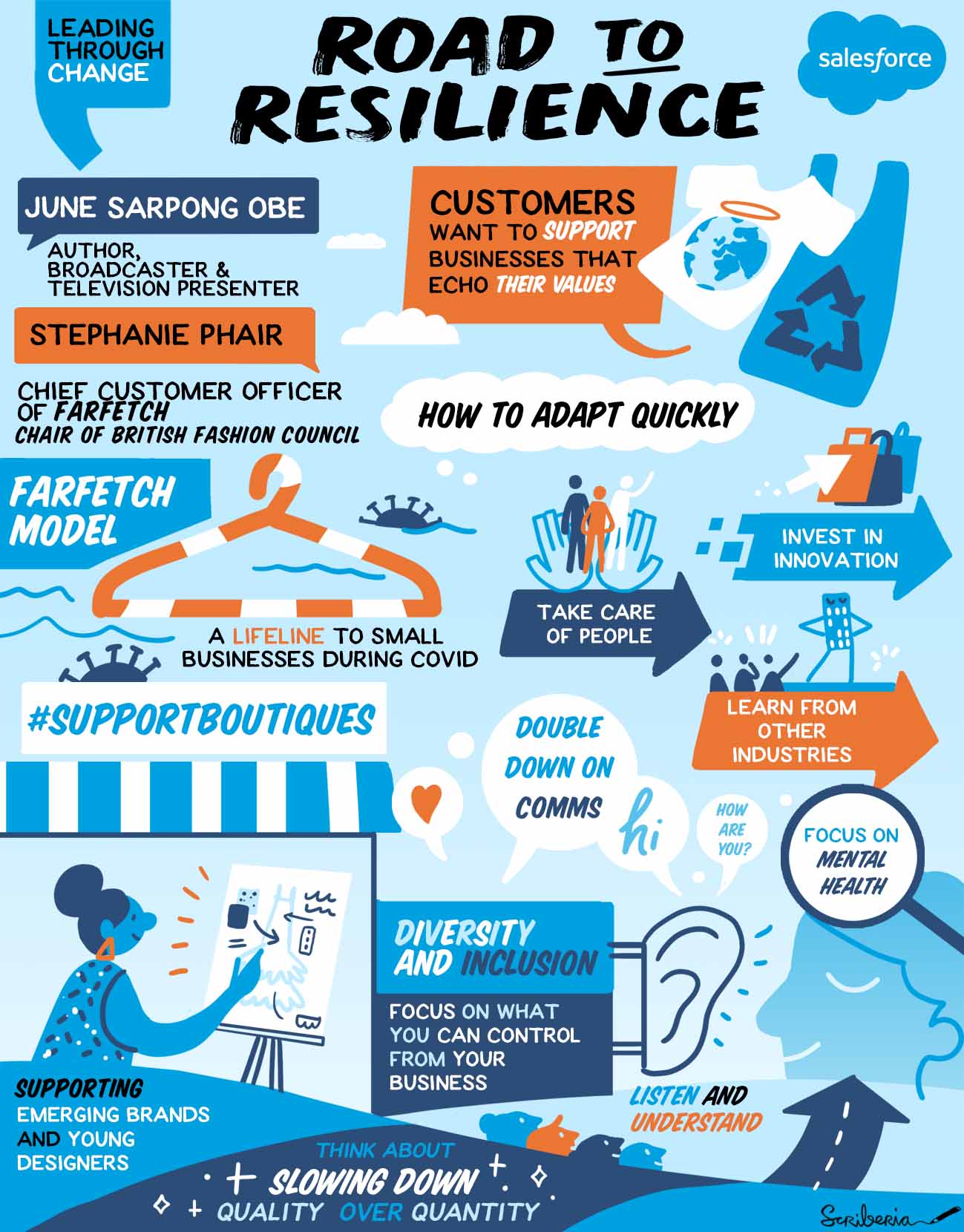Is an interest in luxury fashion frivolous in a world devastated by COVID-19?
Stephanie Phair — Farfetch’s Chief Customer Officer and Chair of the British Fashion Council — doesn’t think so. As she explained to author and broadcaster June Sarpong OBE recently, small family-run boutiques around the world were in danger of going out of business — a tragedy that could have affected a generation of emerging designers.
Read on for more about their eye-opening discussion, or go ahead and watch the entire interview. (You’re in for a treat!)
A lifeline called www.farfetch.com
‘If not for you, we wouldn’t be here now.’
Luxury fashion website, Farfetch, has been a lifeline for small boutiques during lockdown. It connects directly with the inventory of hundreds of them, giving outlets that have closed their physical doors an opportunity to ship to a global customer base. Many of these boutiques include family-owned businesses in France and Italy that go back generations.
The appreciation of these small businesses around the world has been a huge morale booster for Farfetch and its employees. “There’s an amazing pride in knowing that what we do, day in day out, has helped others keep their business,” says Stephanie.
Its commitment to small boutiques led to an initiative to #supportboutiques. “As a marketplace, we’re here to sell stock on behalf of our partners – the boutiques and brands we work with. We felt an immense sense of responsibility, that while maybe at other times we were a channel, now we were the channel. #supportboutiques really captured the message that this was about supporting local businesses and family-run businesses.”
Farfetch’s timely interventions are rippling beyond small boutiques to emerging brands and designers. As chair of the British Fashion Council, Stephanie is all too aware of the pandemic’s impact on young designers. By responding to #supportboutiques, Farfetch’s customers have also been supporting the next generation of designers — a group that typically relies heavily on those same small boutiques.
No one left behind — from China to Sao Paulo
Farfetch’s exec team had early firsthand knowledge of the severity of the crisis from colleagues in China. “We were already getting insight into what it meant to close down offices and work from home. Our first step was to really take care of our people and employees in offices around the world.”
Having navigated government regulations in 12 countries during lockdown, Farfetch is now learning the safest way to get its employees back to their various offices worldwide. Colleagues in China are, once again, providing valuable advice.
“We’ve done all kinds of scenario planning,” says Stephanie, “but what’s surprised us most is just how well our colleagues have adapted. It shows how resilient people are. If you’re all working towards the same goal, you just get on with it. That’s been surprising and wonderful.”
Some of that resilience may well have been the result of what Stephanie describes as a doubling down on internal communications and mentorship. The company was particularly conscious of the pandemic’s impact on junior colleagues, who are often less visible.
“As a company we focused a lot on creating the right environment to make sure no one was left behind. We’ve really encouraged our managers to make sure they check in on all their team members.”
Every fortnight, Farfetch hosts Farfetch Live where the exec team speak directly to the entire company and respond to questions submitted via Slack over the previous fourteen days.
It wasn’t quite the same as those casual but invaluable corridor conversations Stephanie missed, but people appreciated the sense of connection: “What are we thinking about different things? How is the company dealing with certain topics? And there have been so many topics. It’s been seven years in four months.”
Change – faster
Stephanie is a self-confessed seeker of silver linings, with her own take on Dickens’s ‘best of times, worst of times’ line. “In some ways, yes, it’s the worst of times. But on the flip side, it’s also the best of times because you don’t have a choice. Trends that were there—we all knew about them—have accelerated.”
Here are Stephanie’s top three suggestions for coping with ‘seven years of change in four months’:
1. Take care of your people. They are most likely the generation that knows what to do and will show you the next step.
2. Invest in innovation. Whether that innovation is true cutting-edge innovation, or innovation for your stage of the game—like finally getting a website. Digital has always been a nice to have. It’s been that department on the side. Now it’s absolutely intrinsic to business.
3. Learn from other industries. The customer doesn’t think industry by industry. The services and behaviours they expect go across industries. Learning from others and how they’re dealing with the crisis is more important than ever.
Discover more about fashion’s new normal from Stephanie Phair, and get valuable insights on coping with the overwhelming shift online from Michael Green, Salesforce’s Head of Retail & Travel, Transport and Hospitality sector. Watch the entire show here: Road to Resilience: A Look Forward to the ‘New Normal’ in Luxury Fashion with Farfetch









